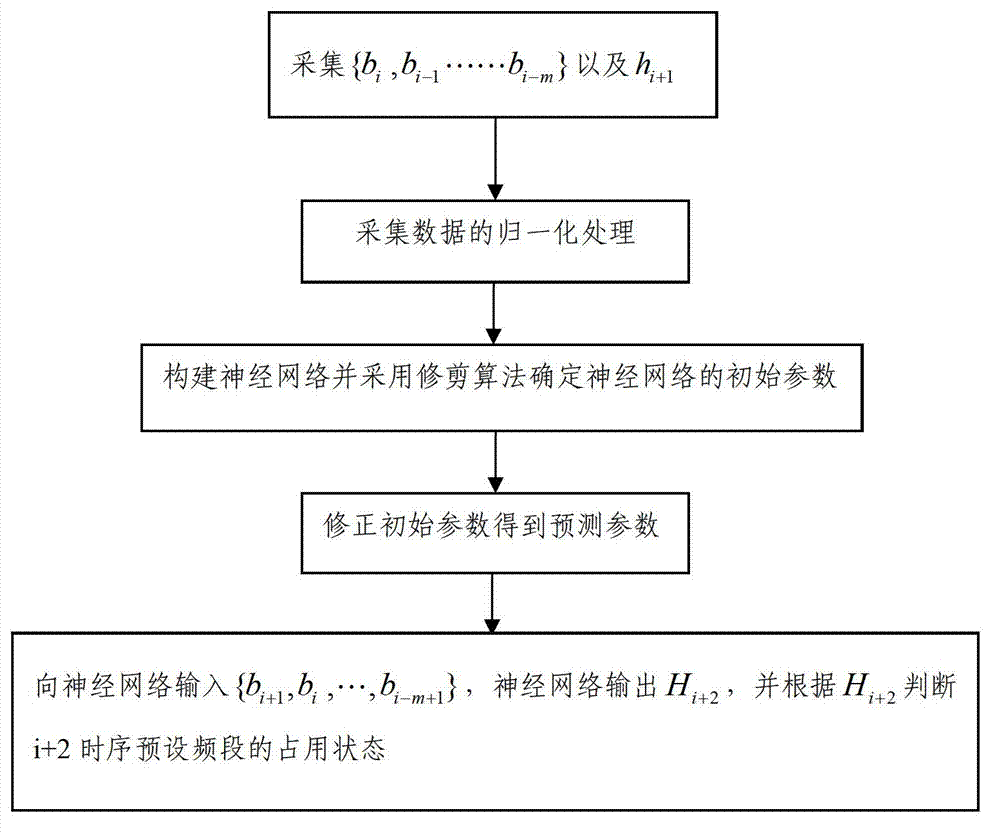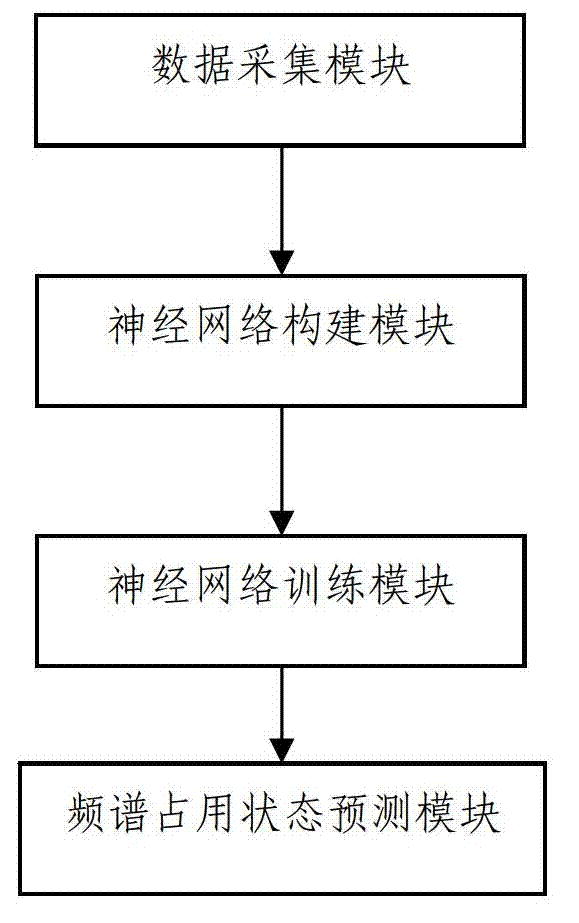Method and device for predicting spectrum occupancy state based on neural network
A neural network and spectrum occupancy technology, applied in biological neural network models, network planning, electrical components, etc., can solve the problems of difficulty in obtaining spectrum occupancy distribution information, inaccurate prediction results, and high computational complexity, achieving strong generalization. The effect of optimization, small amount of calculation, and accurate calculation
- Summary
- Abstract
- Description
- Claims
- Application Information
AI Technical Summary
Problems solved by technology
Method used
Image
Examples
Embodiment 1
[0033] The signal strength of a certain frequency band can be used to measure the occupancy status of the frequency band, so the signal strength can be used as an input to obtain the occupancy information of the frequency point after related calculations such as de-attenuation of the neural network; and then by observing and abstracting several The occupancy state information of the frequency band in the next time sequence of the several consecutive time sequences can be predicted through corresponding calculation and transformation of the change trend of the occupancy state of the continuous time series.
[0034] The method for predicting the spectrum occupancy state based on the neural network in this embodiment is characterized in that the prediction method for the spectrum occupancy state based on the neural network includes the following steps:
[0035] Step S1: Construct a neural network and use a pruning algorithm to determine the initial parameters of each layer of the ...
Embodiment 2
[0045] In this embodiment, the prediction method of the spectrum occupancy state based on the neural network includes the following steps:
[0046] Step S0: collect {b i ,b i-1 ,...,b i-m} and h i+1 . The values of i and m determine the set length. In a specific implementation process, the value of m is usually a positive integer of 4-6.
[0047] Step S1: Construct a neural network and use a pruning algorithm to determine the initial parameters of each layer of the neural network and each neuron;
[0048] Step S2: Input the set {b into the neural network i ,b i-1 ,...,b i-m}, combine the output of the neural network with the characterization variable h that characterizes the occupancy state of the i+1th timing preset frequency band i+1 Carry out a comparison; modify the initial parameters according to the comparison results to obtain the predicted parameters; b i is the signal strength of the i-th timing preset frequency band, i is a positive integer, and m is a ...
Embodiment 3
[0052] Such as figure 1 As shown, on the basis of the previous embodiment, this embodiment implements a neural network-based prediction method for the spectrum occupancy state, and between the step S0 and the step S1, it also includes the collection in the step S0 The step of data row normalization processing. Through normalization processing, the input data units are unified and within the processing range of the neural network, thereby improving the calculation speed of the neural network and shortening the calculation time.
[0053] In the specific implementation process, the initial parameters and the prediction parameters include the number of neurons, the activation function of each neuron, the learning rate, the maximum number of iterations, the preset error, and the weight coefficient parameters between each neuron layer .
[0054] As a further optimization of this embodiment, in the step S3, the initial parameters are corrected with a backpropagation algorithm accor...
PUM
 Login to View More
Login to View More Abstract
Description
Claims
Application Information
 Login to View More
Login to View More - R&D
- Intellectual Property
- Life Sciences
- Materials
- Tech Scout
- Unparalleled Data Quality
- Higher Quality Content
- 60% Fewer Hallucinations
Browse by: Latest US Patents, China's latest patents, Technical Efficacy Thesaurus, Application Domain, Technology Topic, Popular Technical Reports.
© 2025 PatSnap. All rights reserved.Legal|Privacy policy|Modern Slavery Act Transparency Statement|Sitemap|About US| Contact US: help@patsnap.com


